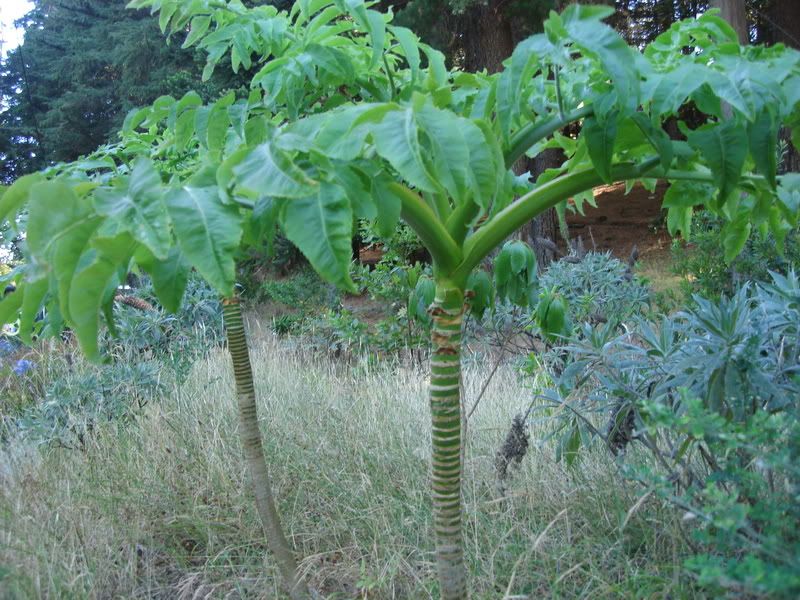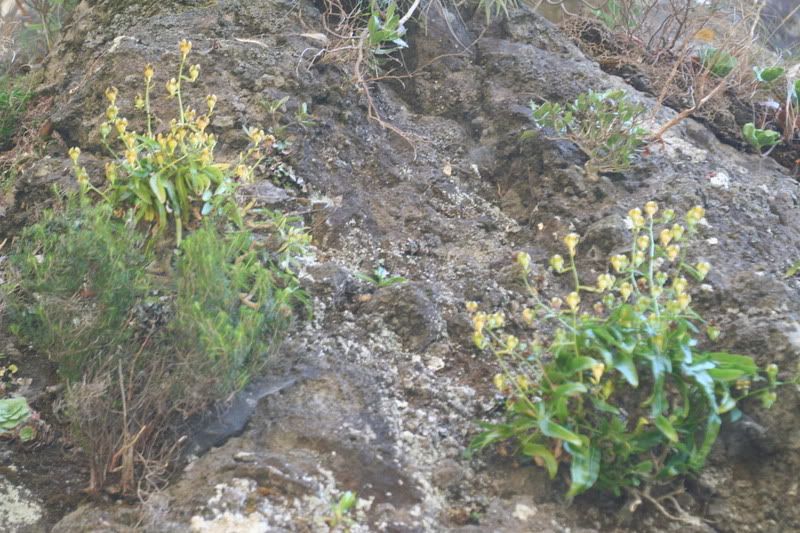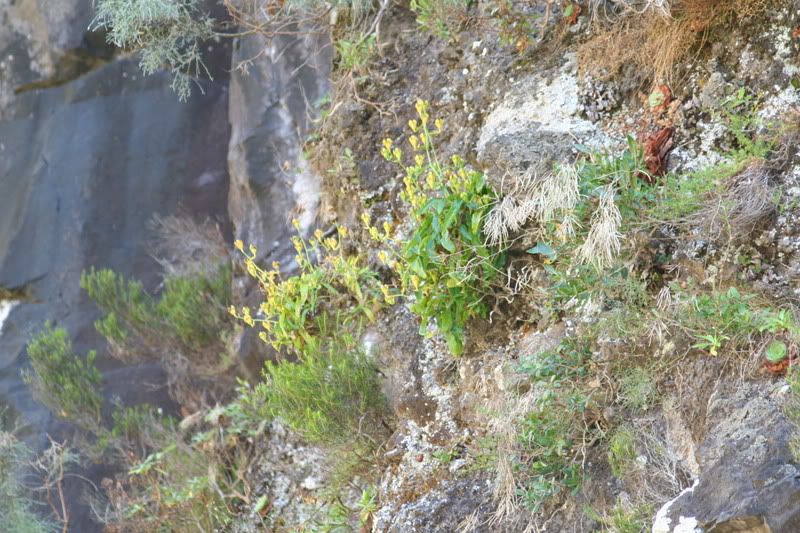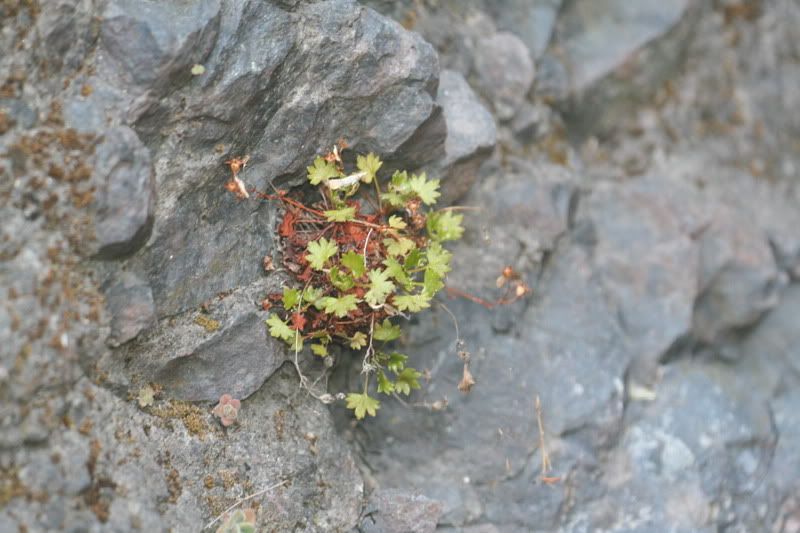Hello !
I do not post here for a long time, mainly because my " summer hollidays" were not properly "holidays" this year and i had been busy with some articles and work to do! And of course keeping the plants well watered in summer is difficult.
It happens that in the field work i did last month, i took some pictures of some Madeiran endemic plants, and i would like to show them to you!
(Gerd i have not forgot the pictures of Viola paradoxa, the reason i still havnt posted them here is because my friends PC crashed and he lost all the data. But do not worry, next time we go to the mountains to take pictures, i will get the seeds for you

I find the island flora very interesting because of the so-called "insular gigantism". This means that there are groups of plants that get giant for some reason, and this mainly happens in islands. Curious isnt it?
I would like to show some examples from Madeira:
This is Sonchus fruticosus, a typical plant of the Laurissilva:


At first glance, it doesnt seem an interesting plant, untill we realize that it is a very close parent of the tiny dandelion (Taraxacum) that uses to hide on the lawns all over the world

. But unlike it's continental parent, this plant is more like a giant dandelion growing in a pole.
The composite family is mainly herbaceous, but there are some species that get gigantic and this is one of them. If you do a cut in the stem, you wont find the growing rings typical of any other bushy plant or tree. The growth is abnormal and doesnt form those rings, wich means the ancestor of this plant was an herbaceous plant. To me the most impressive example of a giant composite, is the genus Scalesia from the Galapago Islands.
Scalesia are trees in every sense of the word. And its amazing if you think that all those epiphytic orchids, mosses and bromeliads that are growing on Scalesia branches are, in fact, growing on a daisy plant!!! Unfortunately this Sonchus isn't as impressive as a Scalesia tree, but it still get's very tall. I measure 1,91m so you can get an idea of the actual heigh of the plant. But this one is still very young as they can grow as tall as 3 meters

The flowers are identical to a dandelion too, and they last for a considerable amount of time.
Here is another example of the " insular gigantism", Melanoselinum decipiens:



This plant is a member of the Umbeliferae family, but again, it got giant, like a sort of a mega-parsley in a pole. It can get as tall as the previous one (3 m), but it only flowers once, and then dies after flowering. The flowers are pinkish to white, and also typical of Apiaceae, but unfortunately, there were no plants blooming at the moment. The plants get pretty impressive when in bloom.
Here's one of my absolute favourites, an orange foxglove


It is so similar to the foxglove that it was first described as Digitalis sceptrum. But latter, due to their bushy growing habit, someone sugested to create a new genus, called Isoplexis. I wish i could know what is the meaning of this name, if somebody could tell me the meaning i apreciate!
A view from top, with the typical pineapple-like bracts at center.

A detail of the inflorescence, showing the conspicuous dark veins

This is the second time i find this plant in 21 years (my life), the last time i had seen it i was like 13 years old, so i did not waisted the opportunity to take a picture with it!

There are only four species of Isoplexis, 1 on Madeira and 3 on the canary islands. They are another typical example "island gigantism". The Scrophulariaceae family is, like the other 2 families that i spoke above, mainly herbaceous.
On these 2 last pictures, please have a look at the backgroung plant to have an idea of the overall habbit.


This is Clethra arborea, the lily of the valley tree. This name was given by tourists, as it is most known as "folhado" here in madeira. The flowers also smell very nice



If you remind of the other post i did about the "weird campanula member" of madeira a couple of months ago, i had no good pictures of the blooms, because the plants were too far to take a nice picture. But i finally found a plant blooming very close to the road. It was a very lucky day, as this bloom seemd the last one of the whole population!

The blooming period was on the end, and the seedpods were starting to develop and change from yellow to green.



This is our endemic saxifraga, growing on a rock:

And finally, for those of you who would like to come to Madeira one day, here are are some pictures of the highland landscape (mainly laurissilva).













I hope you like them!


